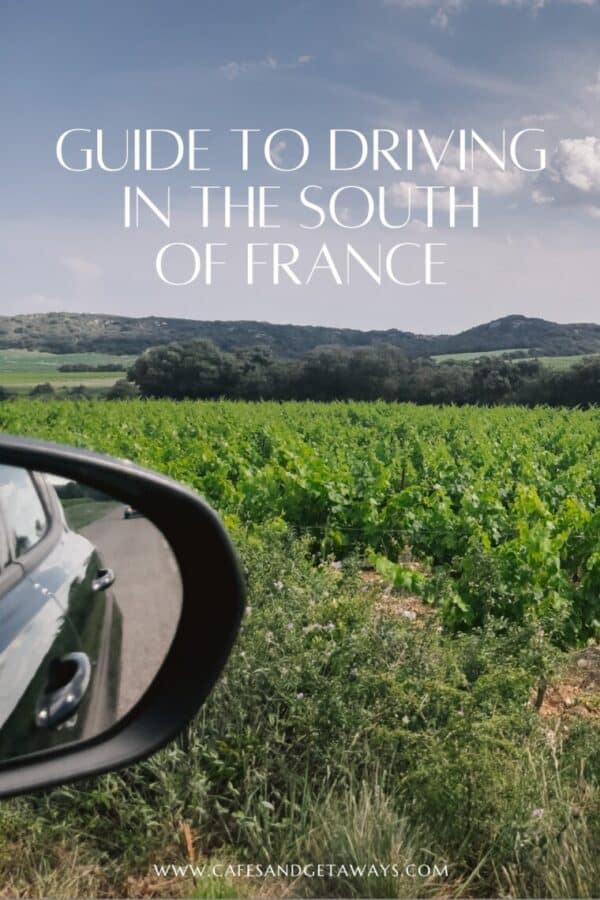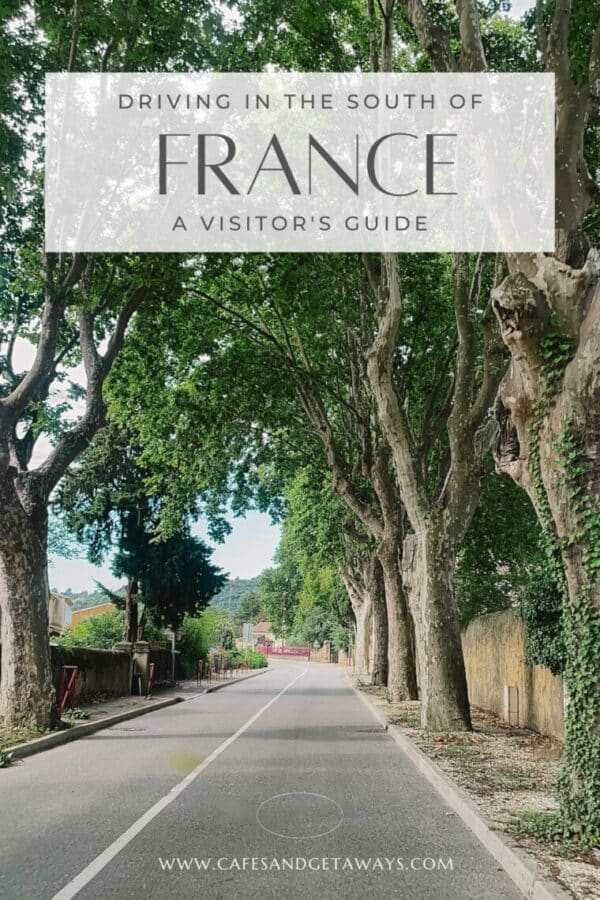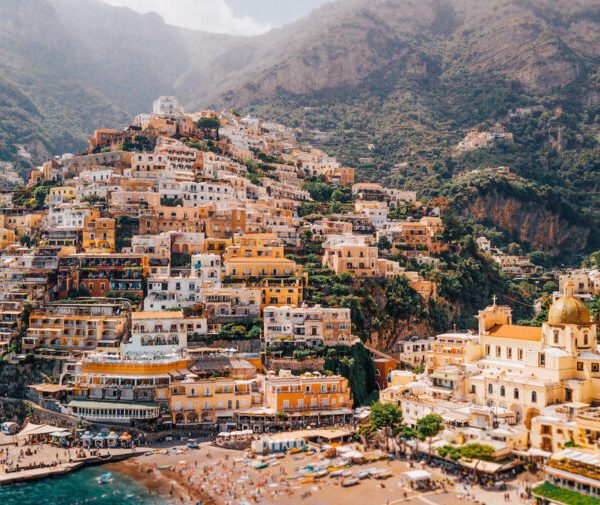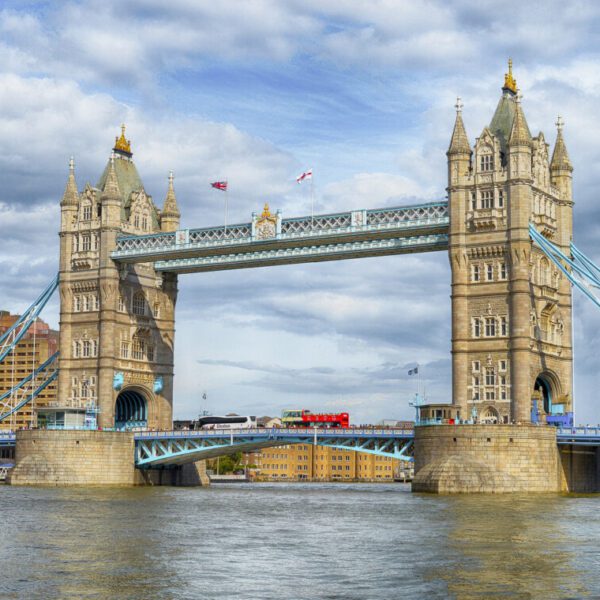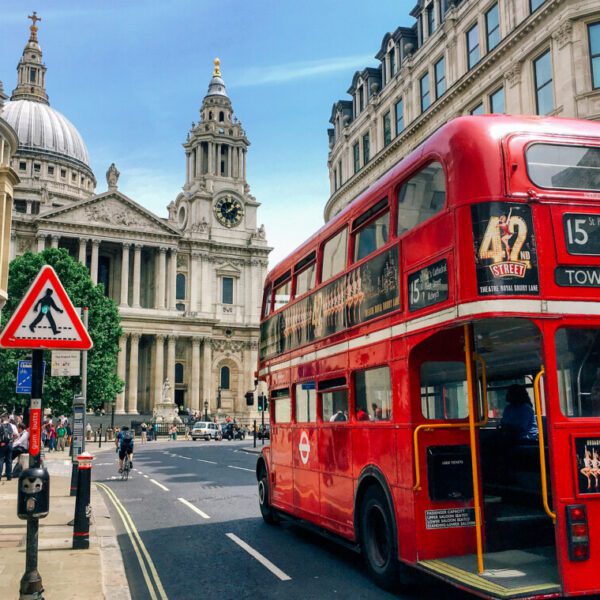Last updated on August 21st, 2023
Driving in the South of France is one of the best ways to get around. It is one of the country’s most picturesque areas, full of rolling hills, olive groves, and small towns. Driving allows you to be flexible with your itinerary and enables you to experience the region’s beauty.
Driving a car is also the most efficient way to get around. Many towns do not have direct access to public transportation, and several remote destinations exist. Driving through the French countryside is pretty straightforward. However, every country has its own unique set of rules and regulations that are important to understand.
This guide covers all the essential tips for driving in the South of France. I have also included everything you need to know about renting a car in France, sample itineraries, and general rules to follow.
Why Rent a Car in France
Cars are the easiest way to get around France unless you are sticking to the main, larger cities. The Southern part of France is comprised mainly of countryside with many small towns and hilltop villages spread throughout. Many of these destinations do not have access to public transportation such as buses and trains.
Not to mention, the Sout of France is incredibly scenic. When you’re driving past the Provence lavender fields or along the Mediterranean, you will want to stop and admire the views. Renting a car gives you the flexibility that group tours do not.
Another benefit of having your own form of transportation is the ability to fit more into your day. Following timetables and commuting to train and bus stops can consume a lot of your time. With a car, you can travel at all hours of the day without the need to rush.

Guide to Renting a Car in France
How Much Does a Rental Car Cost?
So many factors go into the price of a rental car. One of the biggest would be the time of year when you’re renting one. Like anything, the high-peak seasons will come with higher rental prices than if you plan to travel during the shoulder season.
Another factor for the price is the size of the car. The larger the vehicle, the higher the price tag. Small cars are much better to drive in Europe, so spending more money on a larger car does not make sense. With French cities having such an old infrastructure, you will drive through narrow roads and park in very tight spaces.
European cars are generally manual, but you can rent an automatic car for a higher price. There is a smaller inventory for automatic cars, so renting your well in advance is best. An additional hidden fee to renting a car is the location of drop-off.
If you plan on picking your car up at one place and dropping it off at another, you will pay an additional cost. I have found that Discover Cars has had some of the best overall car rental prices among other rental companies.
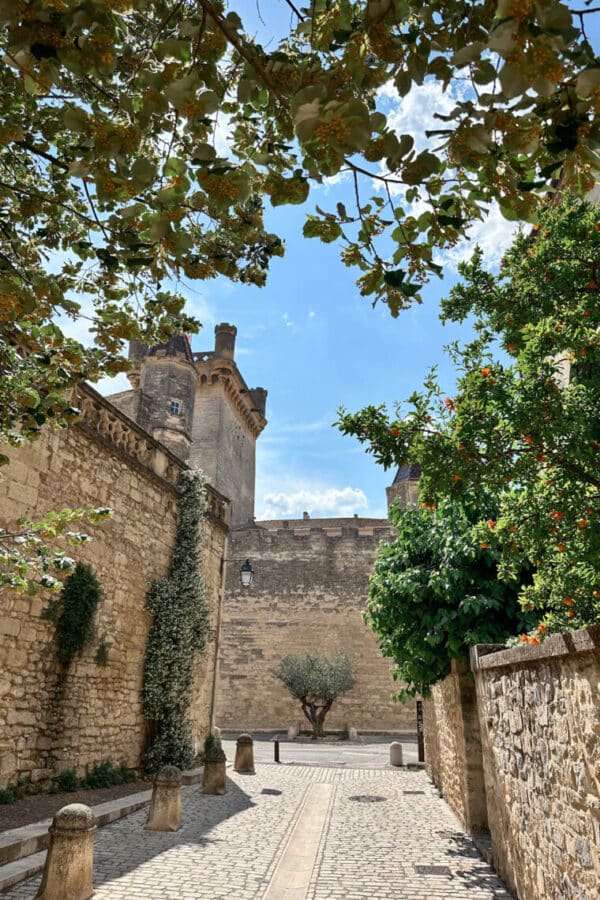

How to Book a Rental Car in France
You can save money by booking a car months in advance and searching for discounts online. Two of the sites I use the most are Discover Cars and RentalCars.com. They cross-reference car rentals from different companies to get you the best prices. I also like the ease of choosing your location and customizing what type of car you’d like.
The airport is one of the most popular places to pick up your rental. Cities like Nice, Marseille, and Paris are all great places to begin your road trip through the South of France. They have large airports and extensive car rental options.
When you pick up your rental, you will bring your confirmation receipt and required documents to the rental company. We picked our car up from Nice on the French Riviera. There is a large building with dozens of booths designated for the various car rental companies.
Once you complete the paperwork, you will take an elevator up to the parking deck to your car. Rental companies organize the parking spots, so pay attention to the signs to help you find your car. There are also attendants there who can help you.
Before you leave, check the car for any damages not detailed in your contract. Smaller car rental locations will go over this step with you, but this is skipped in places like Nice, which has thousands of cars in inventory.
TRAVEL TIP: Gas is not included in the rental cost. You will have to fill up what you used on your own before returning the vehicle.


What Car to Choose
Prices vary drastically depending on the type of car you pick. One important thing to know is that Europe’s cars are mainly manual. Rental companies also have automatic cars, which will cost a little more. The majority of vehicles will come with standard air conditioning and GPS.
Depending on where you travel, consider the vehicle size you want. Just know the larger the vehicle, the more expensive. You won’t need anything too large unless you travel with several people or a large amount of luggage.
If you plan to spend a lot of time in large cities, a smaller car is the best. Parking in towns usually involves tight spots, and having a compact car will help maneuver through narrow lanes.
Car Rental Insurance
Rental insurance is always a good idea. The extra cost gives you peace of mind and could save you many headaches. Standard coverage comes included within your car rental price, but you can upgrade for additional insurance if you’d like.
It is essential to look over the stipulations in the insurance policy at the time of purchase to understand what is included. Collision Damage Waivers (CWD) are an additional form of insurance you can add to your rental policy, but these tend to be more expensive than those purchased through a rental company.
You will want to include the insurance in your rental upfront when you purchase the car. If you wait until the day off to add coverage, the prices will be much higher.
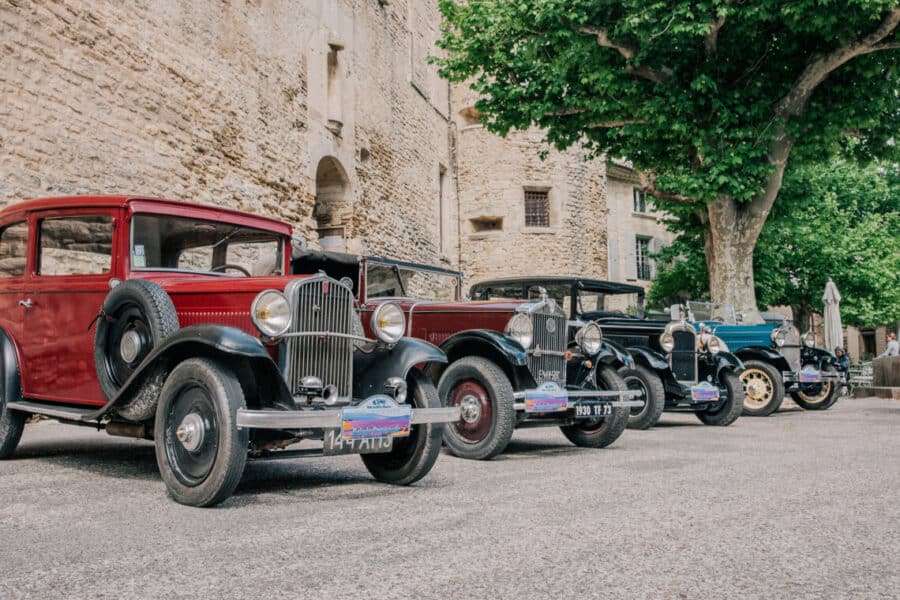
Rental Requirements
Generally, you can rent a car if you are over 21 years of age. If you are under 25, most car rental companies will charge an additional fee for the car rental. Regardless of age, you will need a valid driver’s license to pick up your rental and a credit card with your name on it. In addition, companies will require an International Driving Permit if you are not an EU citizen.
International Driving Permit
Most European countries require an International Driving Permit in addition to your driver’s license. It is very simple to apply for and costs a small fee. France does not require tourists to have an IDP if they visit for a short time. If you plan on driving into another country, though, you will want to have one.
If you know that you will be renting a car in France, apply for your permit at least two weeks before your trip. For an added fee, you can also get a digital copy within an hour online. Just make sure to get it before your trip.
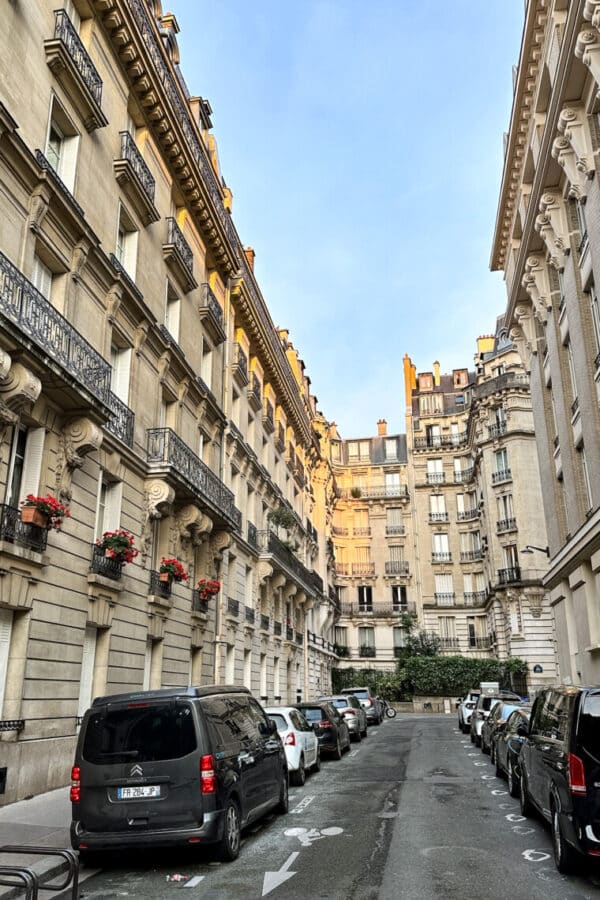

General Tips for Driving in the South of France
Driving in France is relatively simple as long as you avoid the larger cities. Places like Paris are no place for visitors to drive and are better traveled by public transportation or by foot. Something that you should know about French roads is that there are a large number of roundabouts and tolls on the main highways.
The infrastructure of these roads is very impressive, though. They are incredibly well kept, mainly due to the high tolls, and simple to navigate. And if you are driving through the French countryside, you will have the most beautiful views. Here are some general things you should know when driving in the South of France.
French Driving Rules
- There are reduced speed limits for rain and other weather conditions.
- You must wear a seatbelt.
- The legal driving age is 18.
- Drivers on the right have priority in France.
- Using cell phones while driving is illegal.
Speed Limits in France
Speed limit signs are found throughout rural areas and on highways. One thing to note is that the legal speed limit is lower on all roads when it rains. The speed limits depend on the type of road and area you are driving.
On highways, the speed limit is reduced by 20 km/hr when it rains, while on general roads is reduced by 10 km/hr. Signs are more challenging to find within villages and cities. The speed limit will be lowered to 50 km/hr whenever you enter a city.
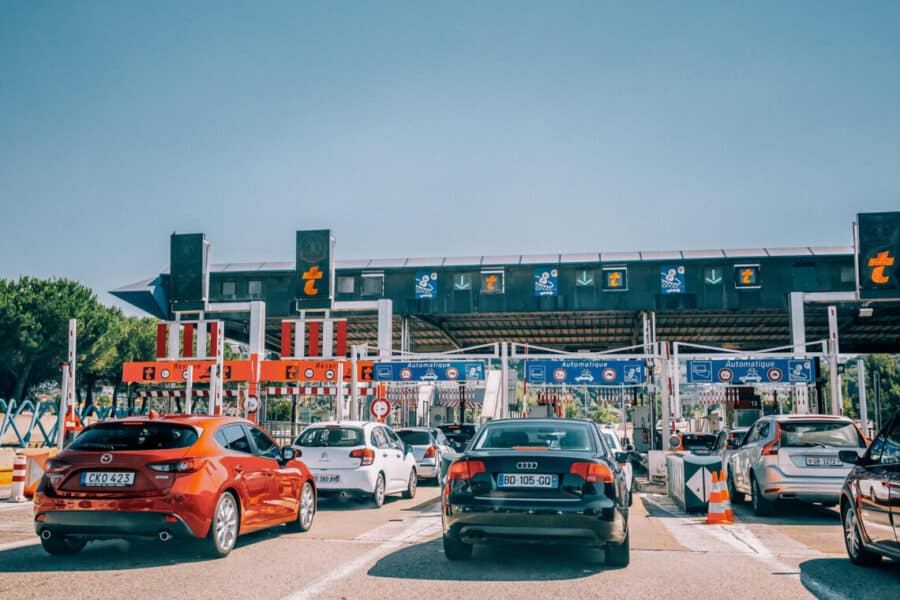
There are Lots of Toll Roads
The first thing you need to know, there are a lot! If you are driving a long distance, you will use the highway (also known as autoroutes in France). The highways in France are very similar to those in other counties in terms of size and speed limit. These, however, come with a high number of tolls.
Using toll roads is quick and simple but can quickly add up. You can take a more scenic route and exclude toll roads on your GPS, but it will add a substantiation amount to your travel time. For example, from Nice to Avignon, toll roads save you almost an hour of driving.
How to Use the Toll Booths
You will come across the first toll booth right before entering the highway. Drive up to one of the machines and grab a ticket. The next set of tolls on your route will require you to insert your ticket to pay.
Your fee will depend on the distance between the two sets of tolls. Sometimes, you pay a flat fee per booth of about 3. Be prepared to easily spend between €80-100 for tolls just from traveling from the French Riviera to Provence.
Most toll stations accept credit cards now, but cash is also taken. Keep an eye out for the symbols above each lane, as they will indicate if they take cash or not. Here are some of the main symbols to know.
- Green Arrow: Lane is open, and all forms of payment are accepted
- Blue Coin: Only cash is accepted
- Blue Man: Cach is accepted, and the lane is manned for those wanting assistance
- Blue Rectangle: Only card payments are accepted.
- Red X: Lane is closed.
- Orange T: These lanes are only for pass holders. You will not want to use these lanes.
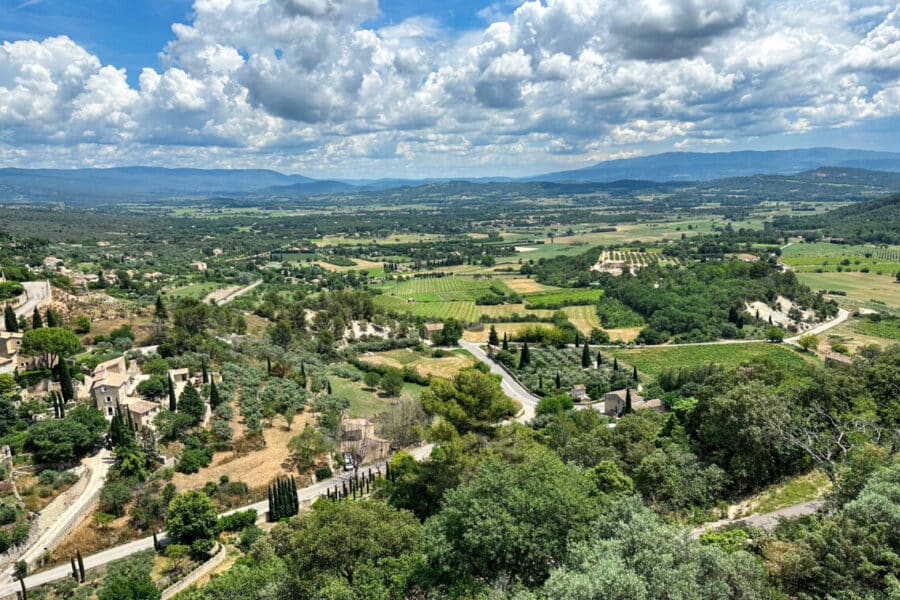
Road Types in France
Autoroute: These are the main highways throughout France and are indicated with an ‘A.’ Autoroutes are the quickest way to get around, with speed limits up to 130 km/hr., but they do come with tolls.
Route Nationale: The main roads are known as route nationale, indicated with an ‘N.’ The average speed limit for these roads is around 110 km/hr, but you will want to watch for the speed signs. The Route Nationale is a good alternative for driving long distances in France to avoid tolls.
Minor Roads: Small roads are indicated with a ‘D’ and have an average speed limit of 80 km/hr. These you will use when traveling locally, but not for long distances.
City Roads: Whenever you are in a city or urban area, the speed limit drops to 50 km/hr. or below. Speed signs are not posted in the towns nearly as often as in rural areas, so be aware that you don’t go over this speed. Another thing to be mindful of when in cities is one-way roads and narrow streets.
Parking in France
Parking options differ drastically depending on where you travel in the South of France. The larger cities have large parking decks extending underground and street parking in many areas. Generally, the further out from the city center, the cheaper the parking fee will be.
Smaller towns will be harder to find parking. Many will have small paid parking lots on the edge of the city and spots on side roads. If you plan on spending at least half the day in a given town, the parking lots are better to use. These charge you a flat daily fee, whereas the roadside meters only allow you to pay for 2-3 hours of parking at a time.
The parking meters in France can take a little bit of getting used to. And in many cases, we experienced long lines to use them. You can download a parking app and pay on your phone to save time. One of the parking apps we used in the Luberon was Pay by Phone, but they may differ depending on where you are.
TRAVEL TIP: You will need the input your license plate when purchasing a parking ticket. Take a picture of it on your phone for when you pay at the meter.

Other Ways to Get Around the South of France
Trains
Another way to get around the South of France is by train. Depending on your travel plans, trains may be the cheapest and most efficient method. A train is an excellent option for traveling to different towns on the French Riviera.
The SNCF train runs from the early morning to late at night, with trains scheduled every 30 minutes. And with tickets costing as little as €3, it is a budget-friendly option. Since most of the towns along the French Riviera are close to the train stations, you don’t need a car.
Trains will be more difficult if you plan to visit multiple locations in the Provence region. Large cities like Aix-en-Provence, Marseille, and Avignon have TGV and SNCF trains, which can get you around quickly. Smaller villages like Saint-Remy-de-Provence and Gordes will not be accessible by train.
Guided Tours
Guided tours are a great way to experience the South of France if you don’t want to drive. In this case, you will want to pick a larger city to make your base, as these are where the tours are stationed from.
To fully experience Provence, the Best of Provence Tour: is an all-inclusive tour that will take you to the top destinations in the area. Your guide will take you to two of the prettiest hilltop towns of Gordes and Roussillon and a stop in Fontaine de Vaucluse. If you visit during the summer, you can take photos at one of the Luberon’s prettiest lavender fields before heading to the Pont du Gard aqueduct.
If you’re a wine lover, then you’d like a Half-Day Wine Tasting Tour. Discover the wines of three different vineyards as you are taken around the Côtes du Rhône for an afternoon of tastings. You will be accompanied by a wine specialist that will teach you about the region’s wines, production, and unique landscape.
Spend the day in the countryside, visiting some of the best lavender fields in Provence, including the famous Abbaye Notre-Dame de Sénanque. Stop by the village of Gordes and Toussilon along the way for time on your own to explore and shop for local products.

Planning Your South of France Road Trip
Now is the fun part, planning your trip! You first want to consider the villages and attractions you want to visit. Next, you’ll need to research the general location of these places. Try to plan your itinerary based on the proximity of the villages to each other. Another great idea is picking a hotel or vacation rental central to numerous locations. Here are some sample South of France road trip itineraries.
South of France Itinerary – 5 Days
- Day 1: Nice
- Day 2: Monaco, Villefranch-sur-mer, and Èze
- Days 3-4: Luberon (Gordes, Saint-Remy-des-Provences, Bonnieux, L’Isle-sur-la-Sorgue)
- Day 5: Avignon, Uzès and Le pont du Gard
South of France Itinerary – 7 Days
- Day 1: Nice
- Day 2: Monaco, Villefranch-sur-mer, and Èze
- Day 3: Aix-en-Provence and Cassis
- Days 4-5: Luberon (Gordes, Saint-Remy-des-Provences, Bonnieux, L’Isle-sur-la-Sorgue)
- Day 6: Avignon
- Day 7: Uzès and Le pont du Gard
Conclusion
From calm turquoise waters to sprawling lavender fields, the South of France is one of the most picturesque regions to visit. Renting a car in France is the easiest and most scenic way to get around, allowing you the flexibility to go wherever you’d like. Know of any other essential tips for driving in the South of France? Leave a comment below!
Enjoyed this post? Check out these other South of France guides!
Travel Planning Resources
BOOK YOUR FLIGHT |Skyscanner is the top search engine for finding and booking flights. They price check over 1,200 travel sites to help you find the best prices.
VIEW ACCOMMODATIONS |For booking hotels and vacation rentals Booking.com is a top resource . They offer some of the cheapest rates and different payment options.
PLAN TRANSPORTATION
- Rental Car: Discover Cars is my go-to site when booking rentals. They work with hundreds of companies worldwide to help you find the best car for your needs and budget.
- Trains: Rail Europe is the leading company in Europe for train travel in Europe. They help you easily book passage by looking at routes, timetables, and prices for 50 different train companies.
- Bus: Omio is an easy website to use for booking train and bus tickets. Similar to Skyscanner, the website looks at hundreds of transport companies to get you the best deals.
SCHEDULE YOUR TOURS | There are many top companies available in Europe. Get Your Guide is one of the best sites for tours, excursions, and activities. Viator is another terrific website for all types of experiences.
GET TRAVEL INSURANCE | Having travel insurance is always a good idea. World Nomads is one of the top travel insurance companies. It will cover you if you must cancel your trip or if something unexpected happens.
Check out the resource page for additional travel planning resources.
Pin it for Later
